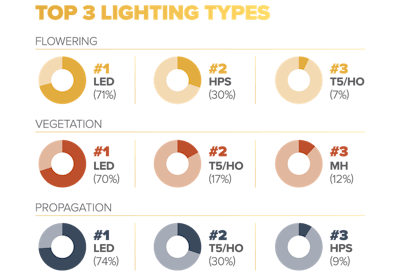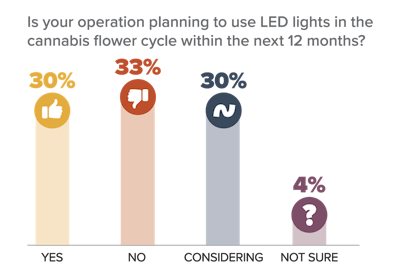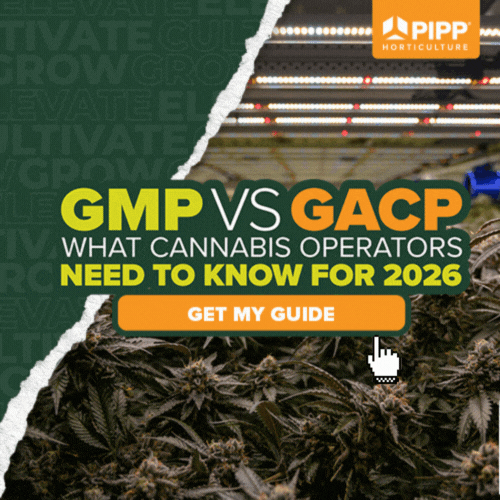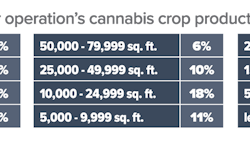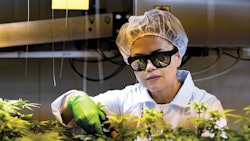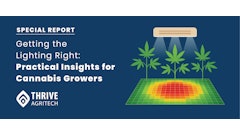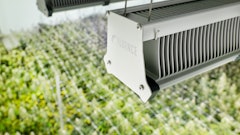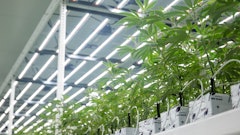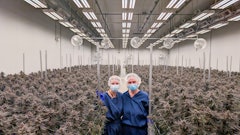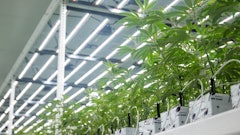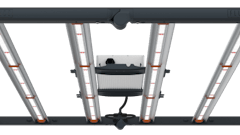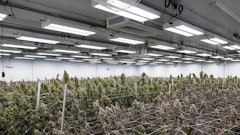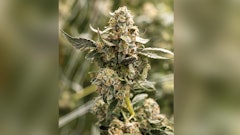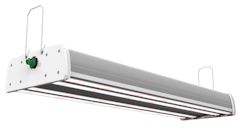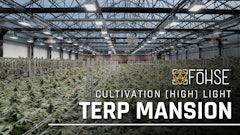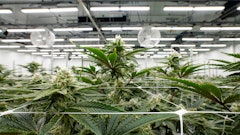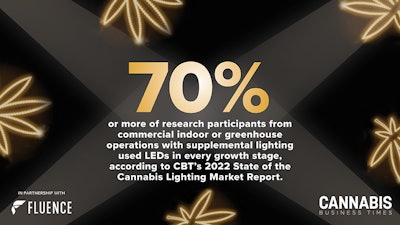
When CBT’s first “State of the Cannabis Lighting Market” research published in 2016, 21% of participants used light-emitting diodes (LEDs) in propagation, 17% in vegetation and 15% in flowering, while other lighting types such as T5 (high output/HO lights) or other HO fluorescents and high-pressure sodium (HPS) were more widely adopted across all growth stages. This year, LEDs dominate the study results.
For the first time in this report’s history, 70% or more of research participants from commercial indoor or greenhouse operations with supplemental lighting used “light emitting diodes (LEDs)” in every growth stage. Across propagation, vegetation and flowering, LEDs were used by more than double the number of growers using any other lighting type.
Propagation: About three-fourths (74%) of study participants reported using “light-emitting diodes (LEDs)” in propagation, up 53 percentage points from this study’s first year. “Fluorescent lights (compact, T5, other HO fluorescents)”—2016’s top propagation lighting choice—were cited by 30% of participants. At 9%, “high-pressure sodium (HPS) lights” ranked third for propagation lighting this year.
Vegetation: 70% of participants reported using “light emitting diodes (LEDs)” for vegetation—another 53 percentage-point increase from 2016. “Fluorescent lights (compact, T5, other HO fluorescents)” were used by 17%. 2016’s top-ranked veg lighting—“metal halide (MH)”—was used by 12% of participants, down 31 percentage points from 2016.
Flowering: 71% of 2022 participants used “light emitting diodes (LEDs)” for flowering, an increase of 56 percentage points from 2016. “High-pressure sodium (HPS) lights,” used by 30% of participants, dropped 32 percentage points from their top-ranked flowering spot in this study’s first year. “Fluorescent lights (compact, T5, other HO fluorescents)” were used by 7% of 2022 participants.
As LED technology has become the standard for cannabis lighting, reservations about LEDs have faded. Among study participants representing non-LED-powered operations, 30% plan to add LEDs for flowering within the next 12 months. Another 30% are considering LEDs for flowering within the coming year.

